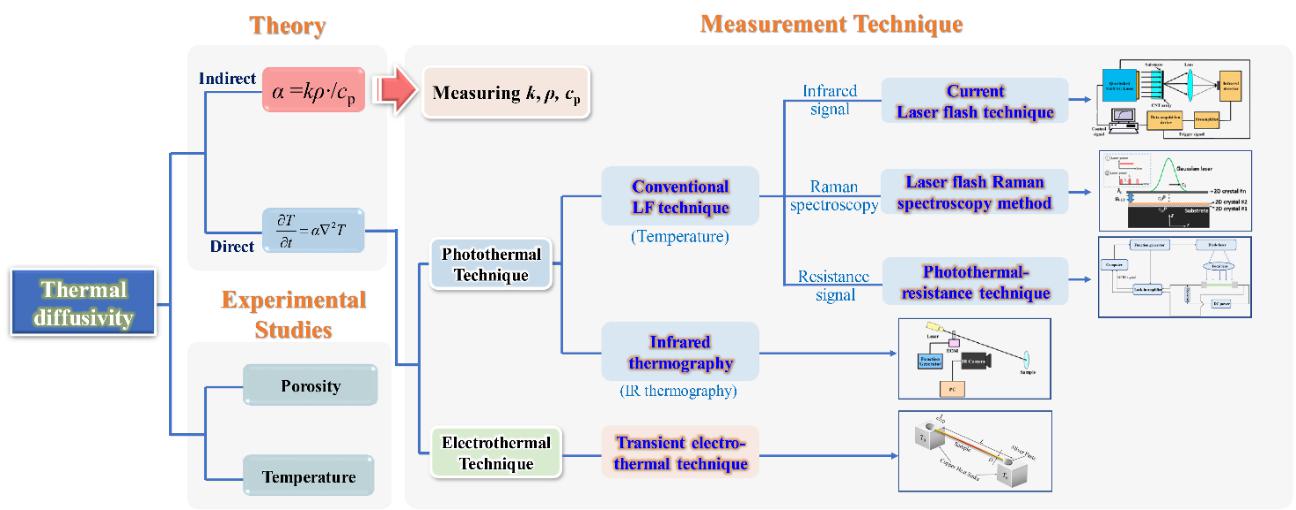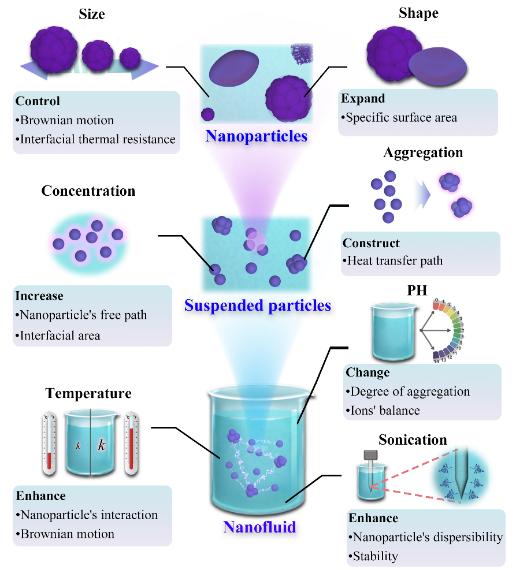Prof. FENG Yanhui’s Group Published A Significant Review of the Thermophysical Properties of Solid Nanomaterials in the Top Physics Journa
Release Time: 2020-06-10Views:
Recently, Prof. FENG Yanhui’s group from the University of Science and Technology Beijing published "A review of recent advances in thermophysical properties at the nanoscale: From solid state to colloids" in the top physics journal Physics Reports . The paper summarizes the applications of data-mining in the research of the thermophysical properties of nanomaterials, discusses the challenges and deficiencies in the current research, and puts forward ideas for future research.

Part Ⅰ mainly introduces the latest research progress on the thermophysical properties of solid nanomaterials, including theoretical and experimental research on thermal conductivity, specific heat capacity and thermal diffusivity. Especially of note, the development process of theoretical models, widely used measurement techniques and the main factors affecting thermophysical properties are introduced in detail. Currently, the most commonly used thermal conductivity measurement techniques include the T-type method, 3ω method, T-3ω method, H-type method, Raman spectroscopy method and time-domain thermoreflectance method. The main factors affecting thermal conductivity are grain size, grain boundaries, interface interactions, doping and defects, etc. For the study of specific heat capacity, the paper introduces the applicable conditions and principles of the Dulong-Petit Law, Einstein model and Debye model, and measurement techniques including the 3ω method and AC-calorimetric method. For thermal diffusivity, the more advanced measurement techniques are the laser flash method, laser flash Raman spectroscopy method, infrared thermography, transient electro-thermal technique, photothermal resistance method, etc.

Part Ⅱ mainly introduces the latest research progress on the thermophysical properties of nanofluids, including development processes detailing classical to advanced theoretical models, experimental measurement techniques, and the main factors affecting thermal conductivity, those being specific heat capacity, density and dynamic viscosity. The classical models discussed include the Maxwell model for spherical nanoparticles, the Hamilton model for the shape of nanoparticles, the Bruggeman model for high volume fraction nanoparticles, the Yu-Choi model for nanolayers, both the Xuan and Koo-Kleinstrener models for Brownian motion, etc. Advanced measurement techniques include the transient hot-wire method, laser flash method, 3ω method, steady-state parallel plate method, and transient plane-source method. In addition, the effect of particle shape, size, volume fraction, agglomeration, temperature, pH value, and sonication time on thermal conductivity and dynamic viscosity is very important. Also discussed are instruments including capillary viscometers, concentric cylinders viscometers, and cone and plate viscometers, which are widely used in the field.

Finally, the paper summarizes the applications of data mining in the study of the thermophysical properties of nanomaterials, briefly discusses the challenges and deficiencies present in the current field, such as preparation methods and the cost of nanomaterials, agglomeration of nanofluids, interfacial thermal resistance hindering the synthesis of ultra-high thermal conductivity composite materials, etc., and proposes ideas for future research.
Physics Reports is one of the most prestigious and influential international review journals in the field of physics. The journal only invites well-known scholars to write reviews on frontier field topics, which have an important leading and guiding role in the development of related fields. The first author of this review paper is Associate Prof. QIU Lin, USTB, and the corresponding authors are Prof.FENG Yanhui, USTB, and Prof. Omid Mahian from Xi'an Jiaotong University. In addition, other well-known scholars including Prof. Pamela M. Norris from the University of Virginia, Prof. Efstathios E. Michaelides from Texas Christian University, Prof. Gaweł Żyła from Rzeszów University of Technology, and Prof. Christos N. Markides from Imperial College London also made essential contributions to this paper.
Resources: https://www.sciencedirect.com/science/article/pii/S0370157319304016


